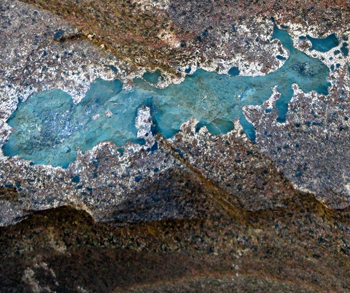If you can't see this message, please click here
|
||||
 |
NEWSLETTER 17Annals of the Brazilian Academy of Sciences |
|||
I am very pleased to introduce the last issue of the AABC of 2016! This year we have published 200 papers (+5 editorials) in six issues - a record for the journal. As usual, it is very hard to select the most interesting contributions among the 33 papers published here, that cover a variety of fields, from Mathematical to Health Sciences. Earth Sciences are leading this issue with 8 manuscripts discussing topics like seasonal variation and the hydro-biogeochemical features of two upland lakes; new aspects of volcanic rocks from the Paraná volcanic province; and new dates from the Devil´s Cave using thermoluminescent techniques. I would also call your attention to a discussion on paleo-sea level changes on the coast of Rio de Janeiro - lots of arguments here. In the field of Chemical Sciences, I would like to highlight a study on barium as an indicator of paleoproductivity. In Health Sciences, there is a contribution that presents new ways to treat fungal infection of skin and a paper addressing the obesity in children. |
 |
||
Please, keep in mind that since 2000 all papers published by the AABC can be downloaded free of charge at the SciELO site and previous editions of the Newsletter are available at the ABC website. We are now inviting you to scroll through the text and click on the title of the article that interests you! Alexander W. A. Kellner |
|||
|
|||
MATHEMATICAL SCIENCES |
|||
1-On simple Shamsuddin derivations in two variables
|
|||
2-Translation Hypersurfaces with Constant Sr Curvature in the Euclidean Space
|
|||
3-On reduced L2 cohomology of hypersurfaces in spheres with finite total curvature
|
|||
4-On non-Kupka points of codimension one foliations on P³
|
|||
|
|||
CHEMICAL SCIENCES |
|||
5-Enhancement of Hevea brasiliensis properties through chemical application
|
|||
6-Barium and its Importance as an Indicator of (Paleo) Productivity
|
|||
|
|||
EARTH SCIENCES |
|||
7-Holocene paleo-sea level changes along the coast of Rio de Janeiro, southern Brazil: Comment on Castro et al. (2014)
|
|||
8-First Occurrence and Paleo-Ecological Implications of Insects (Orthoptera: Ensifera Gryllidae) in the Romualdo Member of the Santana Formation, Eo-Cretaceous of the Araripe Basin
|
|||
9-Geostatistical Approach for Spatial Interpolation of Meteorological Data
|
|||
10-Dating stalagmite from Caverna do Diabo (Devil´S Cave) by TL and EPR techniques
|
|||
11-Cordão Formation: loess deposits in the southern coastal plain of the state of Rio Grande do Sul, Brazil
|
|||
12-Paralavas in the Cretaceous Paraná volcanic province, Brazil – A genetic interpretation of the volcanic rocks containing phenocrysts and glass
|
|||
13-Hourly interaction between wind speed and energy fluxes in Brazilian Wetlands - Mato Grosso - Brazil
|
|||
14-Influence of seasonal variation on the hydro-biogeochemical characteristics of two upland lakes in the Southeastern Amazon, Brazil
|
|||
|
|||
BIOLOGICAL SCIENCES |
|||
15-Local Anesthetic Activity from Extracts, Fractions and Pure Compounds from the Roots of Ottonia anisum Spreng. (Piperaceae)
|
|||
16-Agaricus subrufescens: substratum nitrogen concentration and mycelial extraction method on antitumor activity
|
|||
17-Method validation for determination of metals in Vitis labrusca L. grapevine leaf extracts by inductively coupled plasma mass spectrometry (ICP-MS)
|
|||
|
|||
BIOMEDICAL SCIENCES |
|||
18-The Complex Link between Apoptosis and Autophagy: a Promising New Role for RB
|
|||
19-Iron restriction increases myoglobin and protein expression in Soleus muscle of rats
|
|||
|
|||
HEALTH SCIENCES |
|||
20-Analysis of labour risks in the Spanish industrial aerospace sector
|
|||
21-Formulation and in vitro evaluation of carbopol 934-based modified clotrimazole gel for topical application
|
|||
22-Popular medicinal uses of Calea uniflora Less. (Asteraceae) and its contribution to the study of Brazilian medicinal plants
|
|||
23-Genotypic carriers of the obesity-associated FTO polymorphism exhibit different cardiometabolic profiles after an intervention
|
|||
24-New carbohydrazide derivatives of 1H-pyrazolo[3,4-b]pyridine and trypanocidal activity
|
|||
25-Insulin-like Growth Factor 1 gene polymorphism and breast cancer risk
|
|||
|
|||
AGRARIAN SCIENCES |
|||
26-Evaluation of deciduous broadleaf forests mountain using satellite data using neural network method near Caspian Sea in North of Iran
|
|||
27-Genetic structure from the oldest Jatropha germplasm bank of Brazil and contribution for the genetic improvement
|
|||
28-Effects of irrigation intervals and organic manure on morphological traits, essential oil content and yield of oregano (Origanum vulgare L.)
|
|||
|
|||
ENGINEERING SCIENCES |
|||
29-Production of crispy bread snacks containing chicken meat and chicken meat powder
|
|||
30-Experimental validation of a bearing wear model using the directional response of the rotor-bearing system
|
|||
31-Contributions of the complexity paradigm to the understanding of Cerrado's organization and dynamics
|
|||
32-Ecohydrological modeling and environmental flow regime in the Formoso River, Minas Gerais State, Brazil
|
|||
33-Numerical Study of Wake Characteristics in a Horizontal-Axis Hydrokinetic Turbine
|
|||
 |
Annals of the Brazilian Academy of Sciences
|